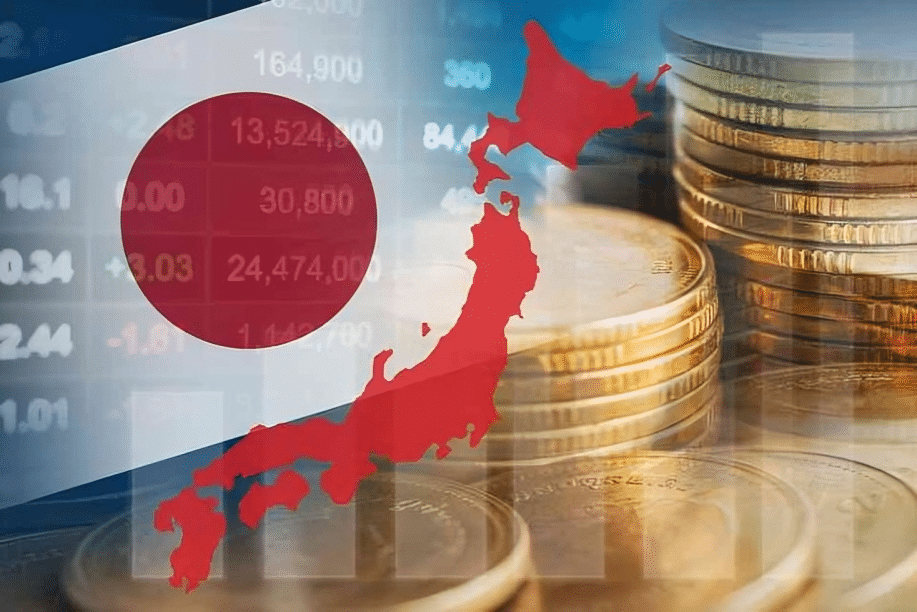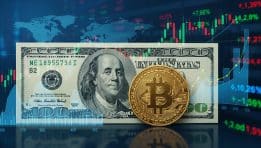The Implications of Japan’s Wholesale Inflation Slowing for the Fourth Month in July
In July, Japan noted a slowdown in wholesale inflation for the fourth consecutive month. This development brings both opportunities and challenges to the Japanese economy. When wholesale inflation decreases, it impacts many sectors—from manufacturing to retail—making it essential to explore the broader implications of this trend.
The recent data reported a cooling in wholesale prices, indicating a potential shift in economic conditions. This slowdown can influence various aspects of the economy and consumer behavior. Here are some critical implications of this trend:
- Cost of Goods: A decrease in wholesale inflation generally leads to lower prices for goods at the retail level. As manufacturers pay less for raw materials, these savings often get passed down to consumers, resulting in more affordable products.
- Consumer Spending: With lower prices, consumers may feel more confident in spending. When expenses decrease, households can allocate their budgets toward leisure and savings, potentially stimulating economic growth.
- Manufacturing Sector Impact: Japan’s robust manufacturing sector may benefit from reduced costs of production. Lower input costs can enhance profit margins for companies, encouraging investment in innovation and expansion.
- Monetary Policy Adjustments: The central bank may reassess its monetary policy strategies, especially if inflation continues to decline. If prices remain stable, there’s a possibility for adjustments to interest rates, which could impact savings, borrowing, and investment strategies.
- Global Economic Relationships: A slowdown in inflation can influence Japan’s trade relationships. As prices stabilize, Japan may become more competitive in international markets, leading to increased exports.
However, there are also potential downsides to consider. While consumers benefit from lower prices, prolonged inflation reduction might signal a lack of demand in the economy. If businesses do not see growth in sales, they may hesitate to invest in new projects or expand their workforce, leading to reduced economic momentum.
Additionally, a prolonged period of low wholesale inflation can lead to deflationary pressures. Deflation can result in consumers delaying purchases, anticipating even lower prices in the future. This behavior can create a cycle of reduced demand, putting further strain on the economy.
From the perspective of government policy, the current trend may prompt concern. Policymakers might prioritize growth strategies through financial stimulus or other measures to encourage spending. It remains crucial for the government to ensure that inflation remains in a healthy range to support sustainable economic growth.
Another aspect to consider is the impact on wage growth. If wholesale prices remain low but wages do not increase, consumers may not feel the benefits of lower inflation in their daily lives. This mismatch can lead to frustration and decreased consumer confidence, which is vital for economic health.
Furthermore, businesses need to remain agile in response to changing conditions. They may want to reconsider pricing strategies, making adjustments to offer competitive rates while ensuring profitability. In some cases, companies may also invest in automation or technology to keep operational costs down, responding to market pressures.
Monitoring wholesale inflation figures closely will be essential for various stakeholders. Economists, businesses, and consumers alike should stay informed about the implications of these changes. Understanding how these trends develop and impact everyday life can help navigate through uncertain economic landscapes.
As Japan’s economy responds to the slowdown in wholesale inflation, the importance of adaptability cannot be overstated. Whether you are a policymaker, a business owner, or a consumer, keeping an eye on these developments will aid in making informed decisions. Embracing change can lead to opportunities for growth and improvement, even amid uncertainty.
The slowdown of wholesale inflation in July highlights a crucial moment for Japan’s economy. While there are many potential benefits, there are also risks and challenges that must be managed effectively. As time progresses, it will be interesting to see how these trends evolve and the impact they will have on both the national economy and everyday lives.
Understanding the Factors Behind Inflation Trends in Japan’s Economy
Inflation is a significant economic metric, and it plays a crucial role in shaping the financial landscape of any country. In Japan, recent trends have shown shifts in wholesale inflation, affecting both businesses and consumers alike. Understanding the factors that contribute to these trends can provide valuable insights into Japan’s economy and its responsiveness to global market changes.
One aspect influencing inflation levels in Japan is the cost of raw materials. Global prices for commodities like oil, food, and metals have fluctuated dramatically in recent years. When these prices rise, businesses often pass those costs onto consumers, leading to higher inflation rates. For example, if the price of crude oil increases, the transportation costs for goods also rise, and this can drive up the prices of finished products. This upward pressure on prices directly impacts Japan, as the country relies heavily on imports for many of its natural resources.
Another significant factor to consider is Japan’s monetary policy. The Bank of Japan (BoJ) has adopted aggressive measures, including low-interest rates and quantitative easing, in an effort to spur economic growth and combat deflation. While these measures can stimulate spending by making borrowing cheaper, they can also lead to inflation if the economy overheats. The balance that the BoJ must maintain between encouraging growth and keeping inflation in check is delicate and complex.
Additionally, currency fluctuations play a vital role in import prices. The Japanese yen’s strength against other currencies can impact the cost of imports and exports. A weaker yen makes imported goods more expensive, contributing to inflation. Conversely, a stronger yen can help keep inflation in check by lowering the price of imported goods. Monitoring foreign exchange rates provides critical insights into the potential direction of inflation in Japan.
Consumer demand is another driving force behind inflation. If consumers are confident in the economy, they are more likely to spend money, leading to increased demand for goods and services. This demand can push prices upward, creating inflationary pressure. A strong labor market where wages are rising can further fuel this consumer confidence and spending. In contrast, if consumers are cautious, demand may decrease, leading to a slowdown in price rises.
Government policies and fiscal measures can also influence inflation trends. To stimulate the economy, the government may implement stimulus packages that increase spending. These measures can raise demand and contribute to inflation. Budgetary decisions that affect public services and taxation can also play a role in shaping inflationary expectations among consumers and businesses alike.
Another key consideration is supply chain dynamics. The COVID-19 pandemic has had a lasting impact on global supply chains, leading to shortages and delays. In Japan, disruptions in these supply chains can manifest as reduced availability of certain products, prompting prices to rise as demand outpaces supply. This imbalance between supply and demand can contribute to persistent inflation, making it essential for industry stakeholders to adapt to these ongoing challenges.
Monitoring inflation is crucial for various sectors, as it can impact investment strategies, pricing decisions, and economic forecasting. For businesses, understanding the underlying factors that drive inflation is essential for effective planning. They need to be agile in responding to changes in raw material costs, shifts in consumer demand, and fluctuations in currency values.
It’s important for individuals to stay informed about these trends, as inflation can erode purchasing power. For consumers, understanding the economic environment enables better financial planning, whether it’s budgeting for groceries or considering larger purchases. Knowing when prices are likely to rise can help you make informed decisions about spending and saving.
Unraveling the complexities behind inflation trends in Japan requires a multifaceted approach. From external factors such as commodity prices and supply chain disruptions to internal elements like monetary policy and consumer demand, each plays a crucial role. By remaining vigilant and proactive, Japan can navigate the challenges ahead while minimizing the impact of inflation on its economy.
Conclusion
The slowing of Japan’s wholesale inflation for the fourth consecutive month in July carries significant implications for the country’s economy and its consumers. This trend signals that inflationary pressures may be easing, which could lead to a stabilizing effect on prices in the near future. For businesses, lower wholesale prices can mean decreased costs, potentially translating into lower prices for end consumers, fostering increased demand in the marketplace.
Understanding the various factors that drive inflation trends helps clarify this development. These factors include global supply chain adjustments, shifts in consumer demand, and central bank policies. With global economic uncertainties, Japan’s ability to navigate these fluctuations will be crucial. As raw material costs stabilize and consumer spending behaviors shift, industries must remain agile to adapt to these changes.
For everyday Japanese citizens, slower wholesale inflation might provide much-needed relief from rising costs, allowing for better household budgeting and improved purchasing power. As prices stabilize, there is potential for increased consumer confidence, which can stimulate spending and economic growth.
The path forward will rely on continued monitoring of these inflation trends in Japan. Policymakers might adjust strategies to ensure that this downward trend is maintained. All eyes will be on the Bank of Japan and its responses to these evolving economic conditions. By staying informed about these developments, consumers and businesses alike can better prepare for the future, fostering a resilient economy that adapts to both local and global challenges.
Comparison, examination, and analysis between investment houses
Leave your details, and an expert from our team will get back to you as soon as possible
* This article, in whole or in part, does not contain any promise of investment returns, nor does it constitute professional advice to make investments in any particular field.
To read more about the full disclaimer, click here- sagi habasov
- •
- 7 Min Read
- •
- ago 46 minutes
 Australia’s Job Market Rebounds in July as Unemployment Rate Eases
Australia’s Job Market Rebounds in July as Unemployment Rate Eases
Australia’s labor market showed renewed strength in July, delivering a welcome boost to the nation’s economic outlook. Fresh employment data
- ago 46 minutes
- •
- 7 Min Read
Australia’s labor market showed renewed strength in July, delivering a welcome boost to the nation’s economic outlook. Fresh employment data
- Lior mor
- •
- 8 Min Read
- •
- ago 58 minutes
 Chinese Investors Turn to Indonesia to Sidestep U.S. Tariffs and Access Growing Local Market
Chinese Investors Turn to Indonesia to Sidestep U.S. Tariffs and Access Growing Local Market
Rising Interest from Chinese Businesses in Southeast Asia Chinese companies are increasingly shifting their focus to Indonesia as they seek
- ago 58 minutes
- •
- 8 Min Read
Rising Interest from Chinese Businesses in Southeast Asia Chinese companies are increasingly shifting their focus to Indonesia as they seek
- sagi habasov
- •
- 8 Min Read
- •
- ago 1 hour
 Dollar Weakens Amid Fed Rate-Cut Speculation While Bitcoin Hits All-Time High
Dollar Weakens Amid Fed Rate-Cut Speculation While Bitcoin Hits All-Time High
The U.S. dollar has fallen to multi-month lows as market expectations for Federal Reserve interest rate cuts intensify, while Bitcoin
- ago 1 hour
- •
- 8 Min Read
The U.S. dollar has fallen to multi-month lows as market expectations for Federal Reserve interest rate cuts intensify, while Bitcoin
- orshu
- •
- 7 Min Read
- •
- ago 2 hours
 Oil Prices Surge from Two-Month Lows Ahead of Trump-Putin Summit
Oil Prices Surge from Two-Month Lows Ahead of Trump-Putin Summit
Global oil markets have rebounded after sliding to two-month lows, as investors prepare for the highly anticipated meeting between former
- ago 2 hours
- •
- 7 Min Read
Global oil markets have rebounded after sliding to two-month lows, as investors prepare for the highly anticipated meeting between former












